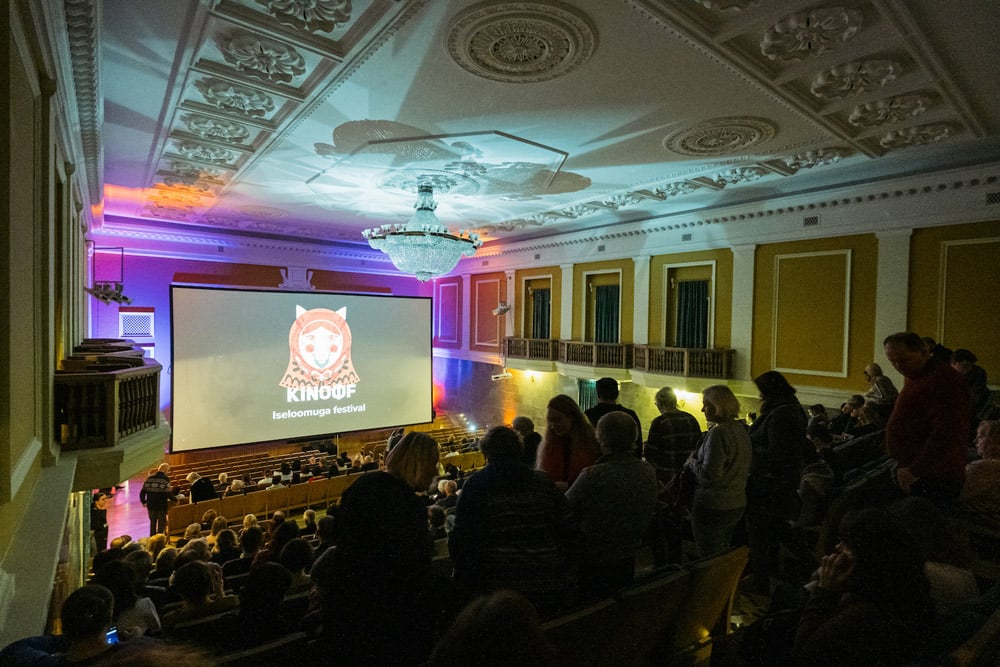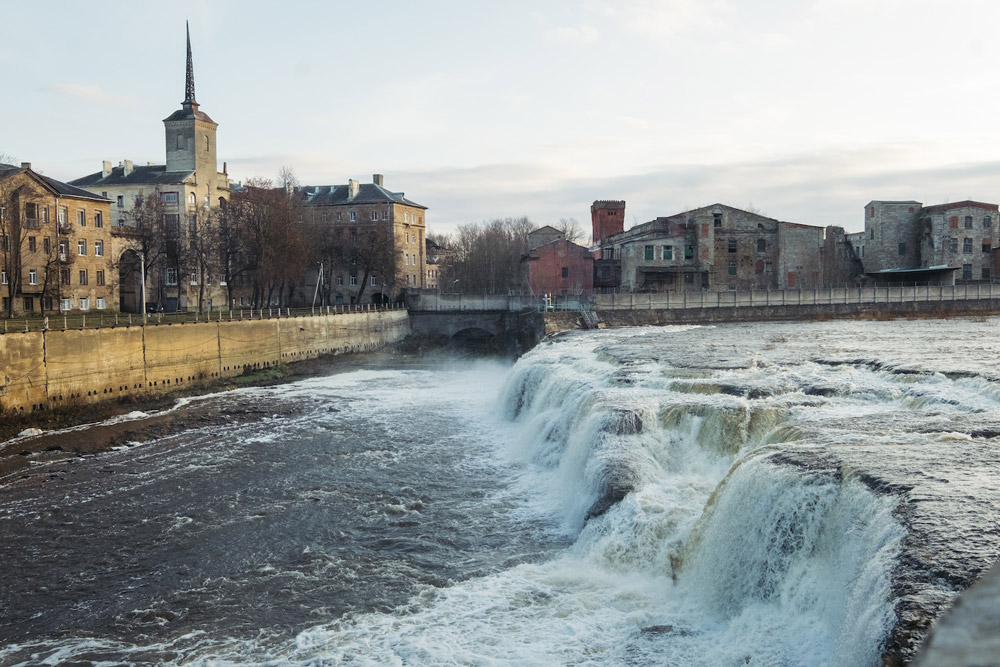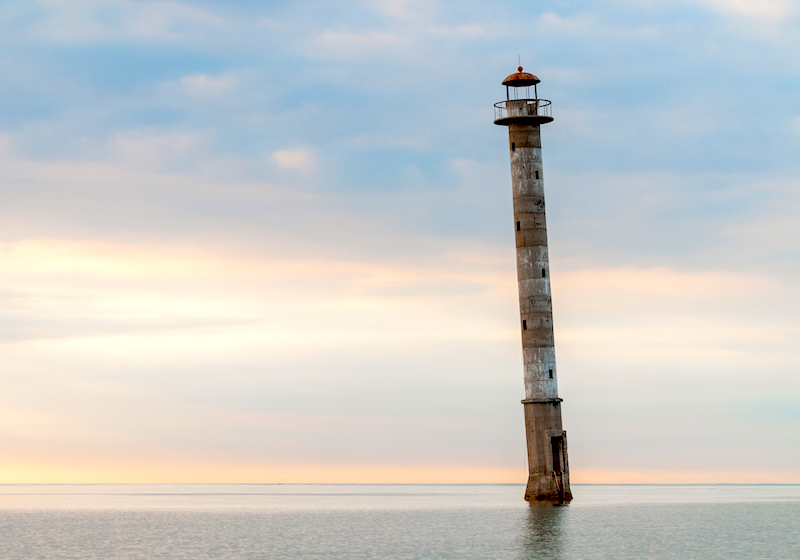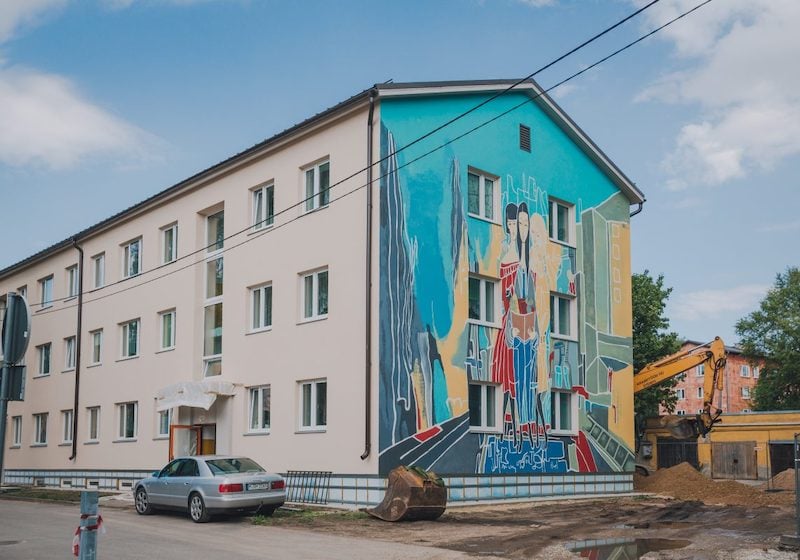Narva anew: can Estonia’s latest cultural crusade rebuild broken ties in its neglected north-east?
Estonia’s northern region of Ida-Virumaa has long been neglected amid the ravages of post-industrial decline. But can a wave of cultural festivals give the area new life?
Two miners holding pickaxes aloft stand hewn from weather-worn stone in the main square of Kohtla-Järve. The monument to the might of industry dates from Soviet times: one of the few tourist attractions in this small city in Estonia’s north-east region of Ida-Virumaa, where the population is mostly ethnic Russian.
Until recently, Kohtla-Järve was stigmatised by the rest of Estonia as a hotbed of crime and opioids, a place to avoid at all costs. But now, the town’s reputation as a city that time has abandoned is changing. A surge of cultural initiatives have been launched to transform the region’s image, making the north-east a hip new location for festivals.
On 22 November, KinoFF, the inaugural offshoot of Tallinn’s Black Nights Film Festival opened in Kohtla-Järve. The familiar wolf of the festival’s logo wore a Russian-style scarf in some of the posters hung around town; a bear in a miner’s hat looked out from others. KinoFF also launched in Narva, the north-east’s largest city, a week earlier.
The new festivals are part strategy that the government hopes will not only help to integrate Estonia’s socially-neglected Russian minority, but perhaps more crucially, try to make them less susceptible to “Kremlin influence”.
A geopolitical hotspot because of its position on the European Union’s eastern border with Russia, the likes of Narva has been eyed with alarm by many Estonians since Russia annexed Crimea in 2014, although ethnic distrust more generally has lingered ever since the tiny Baltic nation of 1.3 million regained independence back in 1991. Many of Narva’s citizens, who are mostly ethnic Russian, get their information from Kremlin-backed television channels, and there remains fear that another separatist conflict might break out.
KinoFF’s opening gala screening was Russian-language feature Another Woman, directed by Anna Parmas, a broad comedy about a female gynaecologist whose marriage is in crisis. KinoFF festival head Darja Saar is careful to balance arthouse films with more accessible fare. “Locals here are more likely to attend films that are audience-friendly or well-covered by Russian TV,” she said. Citizens there feel that “life is already difficult, so they do not need to see the same on-screen.”
The likes of Narva has been eyed with alarm by many Estonians since Russia annexed Crimea in 2014
Instead of commercials or trailers before screenings, KinoFF shows shorts made for the European Commission campaign #EUandME. The Dream Cut, directed by Narva native Vlad Muko, screened at the gala. It is a story of an entrepreneurial father-and-son team who open a hair salon in their garage, championing the supposed ease of start-ups. The film is branded: “The EU can help you achieve your dream.” It feels like a less-than-subtle nudge in a region in which many lost their jobs during de-industrialisation. KinoFF is by no means the first cultural event to be imported from Tallinn to Ida-Virumaa. A music festival, Station Narva, launched in Narva in 2018, on the grounds of the former Kreenholm factory — a gargantuan red-brick complex that was once home to the world’s largest cotton mill and now resembles the set of a post-apocalyptic movie.
Image courtesy of Mägede Hääl Festival
But the region’s revival is also being generated from within. In 2017, a smaller music festival, Mägede Hääl, was started in and around the former Kohtla mines, which are now an underground museum. Mägede Hääl is the brainchild of multi-disciplinary creative Ivar Murd, 29, who grew up in Kohtla-Järve, and whose grandfather worked in the mine.
“What you are seeing now is just a complete reversal,” Murd says of the surge of interest in the north-east. “Growing up, you could never admit to being from there.” Kohtla-Järve had an even rougher reputation than Narva. Former convicts from St Petersburg jails, required to live outside a certain radius of the city, were among its first inhabitants.
All the same, generating enthusiasm from locals for cultural events is an uphill battle. “They have been so kicked around in terms of identity, it’s really hard to get that trust,” says Murd.
After independence in 1991, those who arrived in Estonia after the Soviet Union annexed it and who did not pass or refused to take Estonian-language tests became non-citizens, granted only a grey “alien’s passport” — one of many ways resentment over marginalisation has built up in the Russian minority.
Image courtesy of Mägede Hääl Festival
Last year, the Mägede Hääl team advertised an AirBnB tutorial before the festival so locals could make money renting out rooms to attendees. Only two people came, despite many apartments standing empty. “They are suspicious of people coming in so don’t want to rent them out,” Murd says. The lack of integration is “a symbol not just of Soviet times but what’s failed in modern Estonia as well.”
The lack of integration is “a symbol not just of Soviet times but what’s failed in modern Estonia as well”
Murd persuaded Raul Saaremets, 51, who also grew up in Kohtla-Järve, to come on board as Mägede Hääl’s co-founder. Over the last three decades Saaremets has come to be regarded as a don of Tallinn’s underground music scene through his pop situationist band Röövel Ööbik, radio shows, long-running Mutant Disco warehouse parties, and record label Porridge Bullet.
Saaremets says he took some persuading. “There used to be a rave scene there. I used to go and DJ, but the last 10 years there has been nothing — everybody left.” The generational difference in attitude between him and Murd is stark: “Every time I’d hear there was going to be some new investment into Kohtla-Jarve, I’d think, don’t put any money in, just tear the fucking thing down,” says Saaremets. “It looks horrendous, and it’s just a symbol of these terrible Soviet times. But it’s changing.”
Image courtesy of Mägede Hääl Festival
Saaremets grew up as part of the region’s Estonian minority. “I still have a kind of trauma, it was so violent there,” he says. “I was a punk, and I couldn’t walk down the street without being worried constantly I was going to be beaten up. That was the daily reality.” He was surprised, however, when they held the festival, how much the area has changed. “My biggest realisation was that I can’t tell the difference between the local kids and the Tallinn ones, and it was very easy to in the past, as I know far too well from my experience.” He adds: “The reputation of the area has changed, yes, but it has changed as well.”
Murd agrees. For him, the recent shift isn’t just about government money, but a new generation of creative Estonians without the psychological barriers of their parents are open to the possibilities of such places, he says. “In the older generation there is so much painful memory. But now, with us, there is enough of a disconnect to go back.”




.jpg)